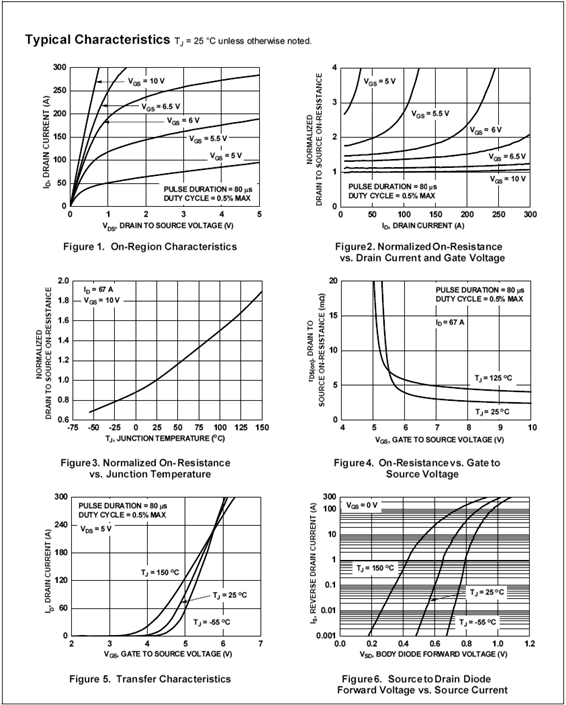3.5 E-MOSFET Data Sheet Interpretation
A data sheet for an E-MOSFET, the FDMS86180, is shown in Figure 3.5.1 . This is an N-channel, high power device using trench construction.

One of the first things that might jump out is the “100% RoHS Compliant” green leaf logo in the upper center, meaning that the device meets the Restriction of Hazardous Substances directive. The device comes in the flat, multi-pin Power 56 package and features an 𝑟𝐷𝑆(𝑜𝑛) of just a few milliohms. Continuous current capability at room temperature is 151 amps with a pulsed current maximum of 775 amps. In Figure 3.5.1𝑏 we find a breakdown voltage of 100 volts and an 𝐼𝐷𝑆𝑆 of only 1 𝜇 A. Recall that this is a normally off device, and thus 𝐼𝐷𝑆𝑆 represents a leakage current. Continuing, 𝑉𝐺𝑆(𝑡ℎ) varies between 2.0 and 4.0 volts, with 3.2 volts being typical. The forward transconductance, 𝑔𝑚 (here referred to as 𝑔𝐹𝑆 ) is 144 siemens at a drain current of 67 amps. This is orders of magnitude greater than what we might see with small signal devices. Turn-on and turn-off times are measured in the tens of nanoseconds, verifying the high speed switching ability of the device.

A series of performance graphs are found in Figure 3.5.1𝑐 . In the upper left is a section of drain curves showing the ohmic region through 𝑉𝐷𝑆=5 V. The plot directly below this shows the increase in 𝑟𝐷𝑆(𝑜𝑛) as temperature rises. There is about a three-fold variation across the temperature range. At lower left is the characteristic curve variation. Note that the curves are less steep as temperature increases, showing a decrease in 𝑔𝑚 and thus, verifying a negative temperature coefficient of transconductance.


